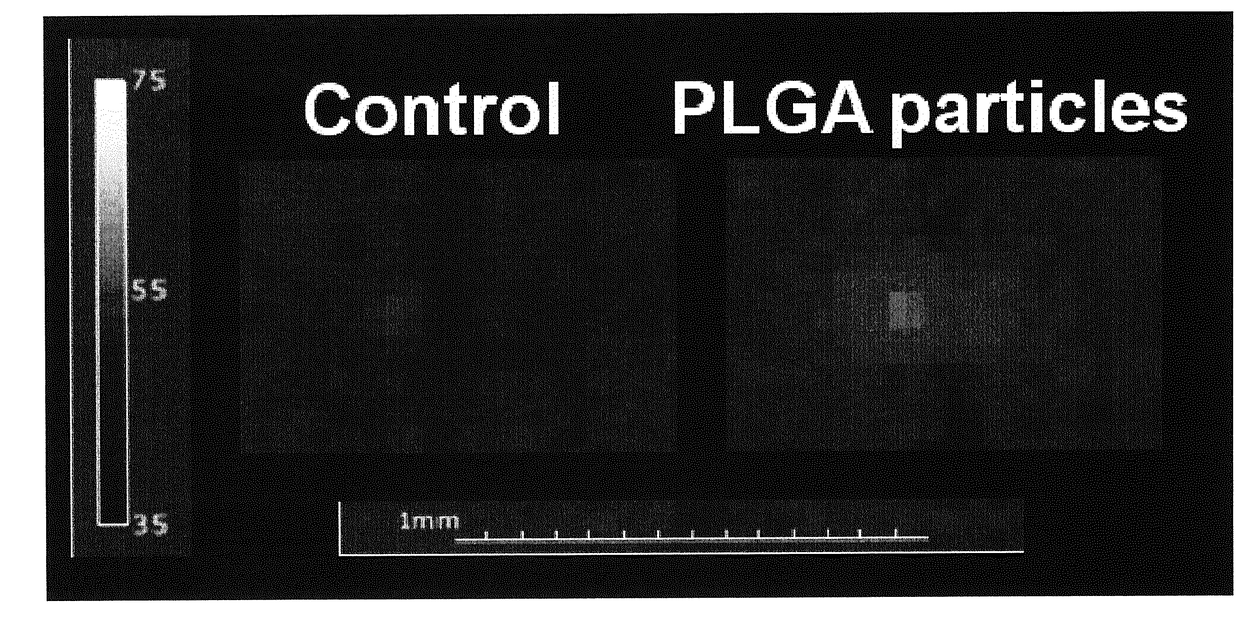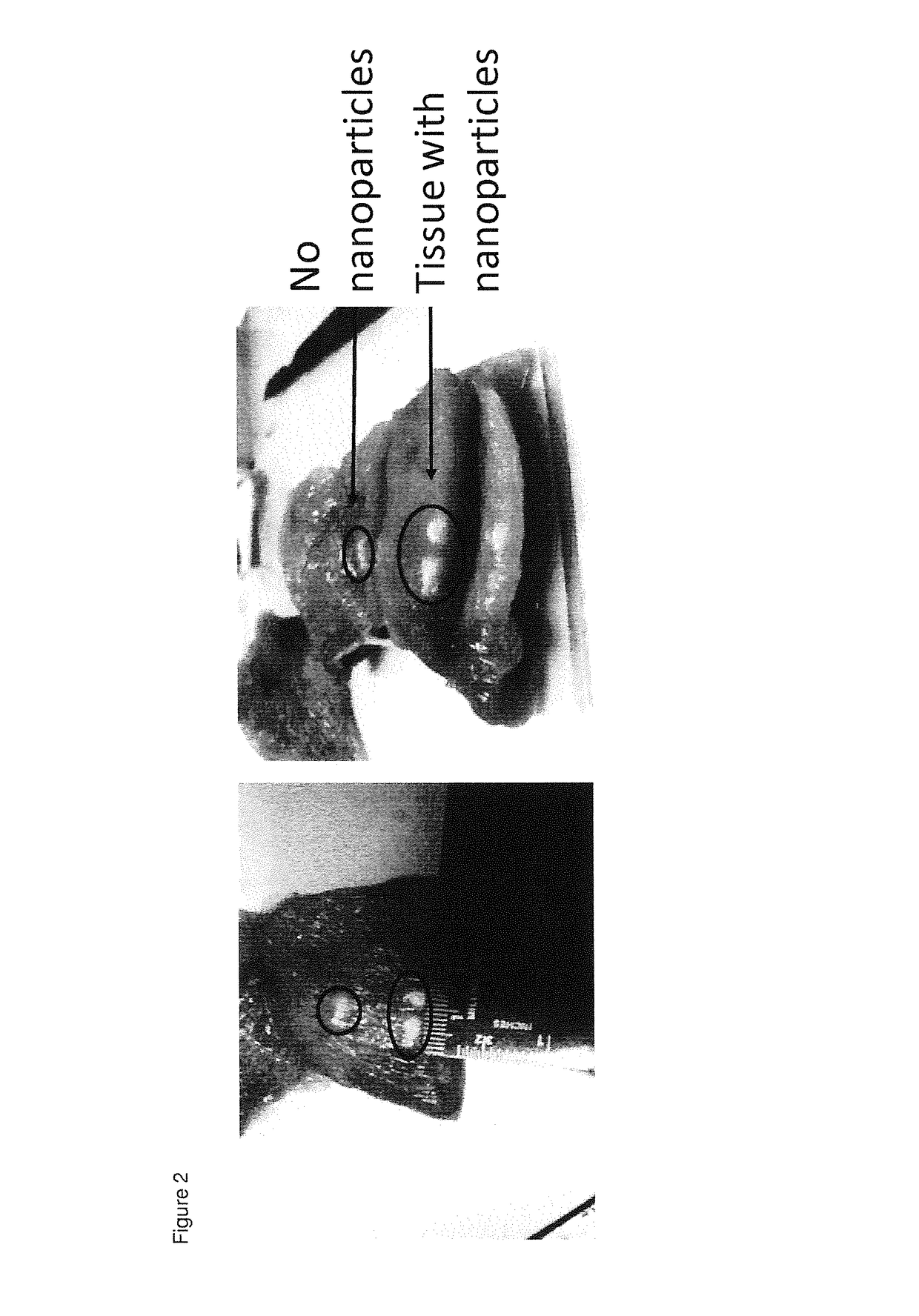Polymeric Nanoparticles for Enhancing HIFU-Induced Ablation
a technology of polymer nanoparticles and ablation, applied in the field of medical therapy, can solve the problems of limited target organs, limited ultrasound imaging depth, and 10000 nm diameter, and achieve the effect of enhancing the ablative effect of hifu treatment and enhancing the ablation effect of hifu in the focal region
- Summary
- Abstract
- Description
- Claims
- Application Information
AI Technical Summary
Benefits of technology
Problems solved by technology
Method used
Image
Examples
example 1
ncement in a Tissue Model with Polymeric Particles
[0042]Particles prepared according to example 2 with a high gadolinium content were injected in a sample of chicken breast that served as a tissue phantom (10 mg / ml). HIFU was carried out at 38 W with a 2 second pulse on a Bruker Clinscan system (7 T horizontal bore). The relevant tissue was then sectioned to directly visualize the ablated zone. Temperature changes were also measured in real time using standard MR thermometry sequences. Comparable results were obtained with the same particles comprising medium and low content of gadolinium. Particles without the gadolinium also showed an enhancement of the ablation effect, although this was less than particles with the low gadolinium content.
example 2
n of Nanoparticles
[0043]PLGA (0.09 gram) was dissolved in 3 ml dichloromethane in a glass tube. Liquid perfluoro-15-crown-5-ether (890 microliter) was added followed by 50 ml of a solution of Prohance (a 3 mg / ml solution of Gadoteridol) diluted in water. Optionally, additional agents, such as a fluorescent dye, may be added to the fluorocarbon at this stage. If a fluorescent particle was required, 1 mg of IcG or IC-Green (Indocyanine Green, Akorn Pharmaceuticals) was added to the solution.
[0044]We prepared particles with a high, medium and low content of gadolinium. For that purpose, the above mentioned solution of Prohance® in water comprised 11.5, 5.75 and 2.85 ml respectively of Prohance® added up with water to 50 ml of solution. The entire mixture was then added dropwise into 25 ml of a solution of polyvinyl alcohol in water (20 gram / liter) under constant sonication (Branson Digital Sonifier 250; 3 minute cycle with 60 sec on and 10 sec off and maximum temperature of 20 degrees ...
example 3
isation of Particles
[0045]We found that particles as prepared above were stable for at least a year when kept at −20 degrees Celsius in the dry form. The particles were also stable in solution at working concentrations for at least 3 months at minus 4 degrees Celsius.
[0046]Diameter of particles prepared according to example 2 was determined using dynamic light scattering (DLS) as previously described (Biomaterials. 2010 September; 31(27):7070-7). The particle size ranged from 80 to 500 nm with a sharp peak at 181 nm.
[0047]The particle diameter distribution remained stable for several months. The particles were lyophilised and frozen for storage. However, particles stored as aliquots in water (frozen) were also stable.
[0048]The particles prepared according to example 2 with high and medium gadolinium content, dissolved in water at a concentration of 1 mg / ml appeared to be exceptionally stable under conditions of ultrasound imaging. We measured particle diameter and count rate (indica...
PUM
 Login to View More
Login to View More Abstract
Description
Claims
Application Information
 Login to View More
Login to View More - R&D
- Intellectual Property
- Life Sciences
- Materials
- Tech Scout
- Unparalleled Data Quality
- Higher Quality Content
- 60% Fewer Hallucinations
Browse by: Latest US Patents, China's latest patents, Technical Efficacy Thesaurus, Application Domain, Technology Topic, Popular Technical Reports.
© 2025 PatSnap. All rights reserved.Legal|Privacy policy|Modern Slavery Act Transparency Statement|Sitemap|About US| Contact US: help@patsnap.com



